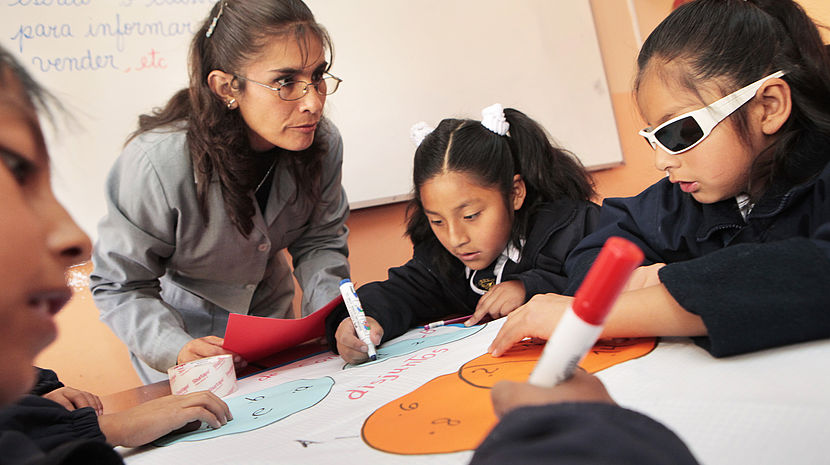29.01.2016 Update on global SDG indicator framework

On 28 January, the President of the General Assembly held an informal meeting on the global SDG indicators to Member States and Stakeholders. John Pollinger, Chair of UN Statistical Commission presented remotely, as did Enrique Ordaz, IAEG-SDGs Co–Chair. Also present was Mr. Stefan Schweinfest, Director of the UN Statistics Division.
Member States provided a few interventions, including The United States, Nigeria, Zambia on behalf of landlocked developing countries (LLDCs), India, Venezuela, Morocco, Colombia, and Ecuador. The US stated that there are gaps in the indicators for Goal 16 and pushed that that the process be open and inclusive for stakeholders, including civil society (thank you!) and academia, as well as for Member States. India indicated that Goal 17 is weak on indicators and that there is a risk of low and high political ambition and some indicators go beyond the targets themselves.
Please continue reading for a synopsis on the global SDG indicator process.
Key points
- The global indicator framework is being put forth to be adopted in March at the 47thSession of the UN Statistical Commission and then be submitted to ECOSOC and the General Assembly for further adoption.
- A proposal for the global indicator framework will be ready in mid-February for the Statistical Commission to review. In it there will be 229 proposed global indicators: 149 (green) completed indicators, 89 (grey) indicators (marked with an asterisk) are currently being reviewed by the IAEG-SDGs group and will be attached as an addendum.
- The global indicator framework should be ready for Member States to use in the High-Level Political Forum (HLPF) in July.
- The High-Level Group (HLG) met two weeks ago in New York and devised a global action plan for data. The focus of the HLG is to build capacity, partnerships and linkages after the global indicators are agreed. (The report is available here.)
- There will be three tiers of indicators:
- Tier I: agreed international standards are available and data can be gathered
- Tier II: standard exists, but data cannot easily be gathered
- Tier III: international standards are not yet agreed and need to be developed
- A work plan will be created for Tier III indicators this year on how to proceed.
Indicator framework
- Global indicators will be the core of all other sets of indicators.
- Member States will develop indicators at regional, national and sub-national levels to complement the global indicators, taking into account national circumstances.
- Thematic indicators are also being developed in a number of areas.
Data disaggregation
- Member States have pledged to leave no one behind.
- The IAEG-SDGs group is committed to including an overarching principle of data disaggregation to ensure that indicators cover specific population groups and other disaggregation elements specified in the targets (“SDG indicators should be disaggregated where relevant by income, sex, age, race, ethnicity, migratory status, ‘disability’ and geographic location, or other characteristics, in accordance with the Fundamental Principles of Official Statistics.”).
- Over the coming months, the IAEG-SDGs group will discuss how to operationalize data disaggregation in the implementation of the global indicator set.
Implementation of Global SDG indicator framework
- Secretary-General’s mandate
- Produce annual SDG progress report to support follow-up and review at the High-Level Political Forum
- National ownership
- Data will be produced by national statistical systems.
- Information will be aggregated at the sub-regional, regional and global levels.
- Statistical Capacity Building
- Statistical capacity building is essential for national statistical systems to meet the demands of the 2030 Agenda.
- The IAEG-SDGs group and the HLG will work closely together to develop a strategic plan for statistical capacity building.
Work plan of the IAEG-SDGs
- Define global reporting mechanisms
- Establish a tier system for indicators based on the level of methodological development and data availability
- Review of data availability for Tier I and Tier II indicators
- Create a work plan for further development of Tier III indicators
- Have procedures for methodological review of indicators
- Give guidance on data disaggregation
- Discuss interlinkages across targets and goals, and use of multi-purpose indicators
- Meet twice in 2016
Upcoming dates
- 8-11 March, 47th Session of the UN Statistical Commission
- 30 March to 1 April, Third IAEG-SDGs meeting, Mexico City
- Discussion on global reporting mechanisms, disaggregation of data, tracking of indicators with a focus on unavailable data, among other topics
- Fall, 2016, Fourth IAEG-SDGs meeting
- Later in 2016, World Forum of Sustainable Data